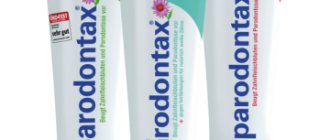The method of dental treatment using a resorcinol-formalin solution was invented at the beginning of the last century and at that time was considered quite progressive. Having no analogues, it made it possible to save teeth that had previously been removed, so it quickly became widespread among dentists.
A century later, it is still used by individual doctors, although the view of the technique has changed significantly due to research and confirmed results. Experts will tell you about all the nuances, pros and cons, and consequences of resorcinol-formalin treatment.
The essence of the method
The resorcinol-formalin mixture has bactericidal and mummifying properties, so its introduction inside the canal stops pathological processes in the pulp, even if it cannot be completely removed. Once the mixture is left there, it gradually hardens without expansion or loss of volume, and the channels remain sealed for years.
To perform such treatment, you do not need special skills or high professionalism, or specialized equipment. In Soviet times, this method was used in more than 80% of cases to eliminate diseases of the premolar pulp. Now the technique is falling out of use, in some countries it is prohibited at the legislative level.
Silver plating method for root canal filling
The silvering method involves soaking the impassable part of the root canal with silver nitrate. After the restoration of silver, a thin film of metallic silver (“silver mirror reaction”) is deposited on the walls of the micro- and macrochannels, “burying” the microflora in the thickness of the dentin. As a result of the interaction of silver with pulp proteins, silver albuminates are formed, which “preserve” the pulp, turning it into an aseptic strand that is not subject to putrefactive decay. In addition, the presence of silver in the canal, which has a long-term antiseptic (more precisely, oligodynamic) effect, prevents the growth of microflora and the development of inflammatory complications from the apical periodontium.
Impregnation using the silvering method is also carried out in 3-4 visits.
Advantages and disadvantages
The resorcinol-formalin method is widely used due to the following factors:
- ease of preparation of the medicinal mixture;
- confidence in the safety of the reagent at the time of development of the method;
- simple treatment technique;
- accessibility due to the low price of the composition.
Among the disadvantages are:
- the need for re-intervention in more than 75% of cases after just a few years;
- a complication of diagnosis, since in X-rays the channels filled with resorcinol-formalin composition look hollow;
- increased fragility and fragility of dentin after exposure to formaldehyde and resorcinol;
- detected harm to the patient's health.
Mummification of the contents of the impassable part of the root canal
The term “mummification” in dentistry refers to the prevention of microbial decomposition of the pulp by impregnating it with potent antiseptics (thymol, camphor, iodoform, cresol, parachlorophenol, etc.). For this purpose, a cotton swab moistened with potent, slowly dissolving antiseptics, or a paste containing mummifying substances, is placed into the tooth cavity at the mouth of the root canals, and the tooth is sealed. This method is currently practically not used due to its low efficiency.
Harmful components
Studies have confirmed that exposure to resorcinol-formalin mixture poses both local and general health risks. After hardening, due to the disabling of the nerve, the pain disappears, but this does not mean the complete destruction of all pathological foci. The body is simply no longer capable of a natural reaction in this place - pain.
After placing the resorcinol-formalin composition into the canal, slow gum atrophy occurs, the soft tissues near the tooth subside, and the root neck is exposed. Due to the fact that formalin is very hygroscopic, it draws fluid from the bone tissue, so the dentin and root become brittle and brittle. By the time tangible signs of inflammation appear, it is difficult to re-treat, since the fragility of the tissue prevents it from being properly dissected, and there is a high probability that it will crumble in the process. For the same reason, removal is also complicated.
Substances included in the resorcinol-formalin composition cause darkening of dentin and enamel. Most often there is a pink or brown tint. It is impossible to whiten such a tooth using existing methods, since the darkening is concentrated not on the surface, but in the very structure of the bone tissue. In severe cases, destruction of connective tissues, paresthesia of the facial nerves innervating the lower jaw, chronic infections inside the maxillary sinuses, etc. are possible.
Premolars treated in this way cannot be used as a support for installing a permanent denture - this is hampered by increased fragility, so you have to choose uncomfortable removable dentures.
But the mixture has the greatest harm on the general condition of the body. This harm cannot be assessed objectively, since the consequences are strongly separated from the moment of treatment and have not previously been associated with each other. However, numerous experiments and studies have confirmed how extensively resorcinol-formalin solution affects health. Formaldehyde, which is the active ingredient of the composition, is found in the kidneys, lungs, and muscle fibers. The main blow falls on the reproductive system, respiratory organs, the central nervous system is depressed, the skin and vision are affected.
Problems of retreatment of resorcinol-formalin teeth
If a source of infection persists in the area of a tooth filled with a resorcinol-formalin mixture or inflammation occurs again, difficulties in retreatment arise at the next stages.
Diagnostics. The hardened resorcinol-formalin mixture is not visible on x-rays: in the images, filled root canals look empty. Because of this, it is impossible to assess the quality of the filling, see pores, voids or leaks. This makes it difficult to assess the condition of hard tissues and prepare a treatment plan.
Unsealing of root canals. It is needed for re-treatment. Normally, the old filling material is removed, sanitation is carried out, and re-treatment is performed. If a resorcinol-formalin mixture was used, unsealing becomes more difficult. It can be performed mechanically (rotating instruments are used), or chemically (a good result is obtained by using Endosolve, a special liquid for unsealing). Most often, it is necessary to combine these methods, unfilling the root canals gradually, in several stages.
Preparation. When preparing for treatment at the preparation stage, there is a high risk of perforation (the appearance of a through hole). This is due to changes in the structure of the bottom of the cavity, difficulties in diagnosis using radiography, and changes in the color of dentin.
Filling or prosthetics. Complicated by the high fragility of hard tissues. In some cases, hypercementosis develops: excessive deposition of cement on the tooth roots. This complicates both filling and tooth extraction.
Stages of treatment
The resorcinol-formalin treatment method is carried out in several stages. It requires a minimum of three visits to the dental office.
First visit
All manipulations that are performed using this method on the first day, in the case of baby teeth, are recommended to be carried out without injection anesthesia. Sometimes parents ask to numb the area if the child is very afraid and has a low pain threshold. In adults, local anesthesia is used, since the roots go deeper and are treated on a larger scale.
The tooth cavity is opened using a drill. A resorcinol-formalin mixture is prepared from a few drops of formalin and a small amount of resorcinol powder. The paste is mixed until smooth using a metal spatula. Before applying the paste, the tooth is isolated from saliva and thoroughly dried, and then a solution is placed into the canal. Depending on the size of the cavity, you need to place 1-4 drops there. The mixture is compacted using special tools, and the excess is removed. Then the procedure is repeated.
At the end of the first stage, the dentist installs a temporary artificial dentin filling and schedules a follow-up visit in a day or two. This time is enough for the substance to take effect.
Second visit
Since the nerve has already been killed by the second visit, anesthesia is not used. The temporary filling is opened, the medicine placed for the first time is removed along with the pulp, and the paste is again applied to the empty root canals. The cavity is sealed with artificial dentin.
Third visit
The temporary filling is opened. At the final stage, a catalyst - chloramine or caustic soda - is added to the paste to resorcinol-formalin to speed up disinfection inside the cavity. The canal is tightly filled with this composition, and then the tooth is filled with a permanent filling. The coronal part is restored while maintaining the anatomical shape.
In rare cases, the dentist decides that three fillings are not enough, then a fourth visit is scheduled, and a permanent filling is installed only for the fourth time.
Effect of endodontic solutions on resorcinol-formalin paste
Author: Ronald N. Vranas
This study determined the ability of any of four endodontic solutions to have a softening effect on resorcinol-formalin paste, as well as what differences exist between the dissolving capabilities of these solutions. Resorcinol, formalin and zinc oxide were mixed and left for 30 days. Test solutions: 0.9% sodium chloride, 5.25% sodium hypochlorite, chloroform and Endosolv R. Seven solution samples were tested and an additional seven served as controls. Each sample was saturated with one of the solutions, and the penetration depth was tested after 1, 2, 5, 10 and 20 minutes. using a strain gauge. After 2 min. hypochlorite and sodium chloride solutions had significantly better penetration than other samples (p<0.0010). Sodium hypochlorite was superior to all other solutions after 5 min. This study shows that both hypochlorite and sodium chloride have a significant softening effect within 2 minutes.
The main goal of filling root canals is to fill the root canal system three-dimensionally. Grossman stated that the ideal root canal filling material should be easy to insert into the canal, fill the canal laterally and apically, should not shrink, be resistant to washout, be bacteriostatic, be radiopaque, should not stain the tooth structure or irritate the periapical tissue, should be sterile before insertion and also be able to be easily removed from the root canal if necessary. Despite this, gutta-percha, in any of the presented forms, although it does not meet all the above requirements, is still considered the best obturation material for root canals.
The pastes that were used for filling root canals were zinc oxide eugenol (ZOE) or resin-based (without ZOE). Due to the lack of apical control and release into the periapical tissues, which are subsequently exposed to toxic effects, the pastes have not been highly regarded as a suitable root canal filling material.
Some eastern bloc countries, mainly Russia, still use pastes to treat pulpitis. Although there are many variations of pastes used, their main component is resorcinol. This material is a white crystalline powder that turns pink when it comes into contact with air, light or metal. The mixture used to fill root canals is made of resorcinol, zinc oxide and formaldehyde. These three ingredients are mixed together to form a paste, which is then applied to the root canal. Once cured, this material creates a virtually impenetrable barrier and changes the color of tooth structures to shades of red or pink. As a rule, this paste is placed without adequate treatment of the root canal from decay, which subsequently leads to the appearance of periapical pathologies in many teeth. If these teeth are to be saved, they require retreatment or apical surgery. Since the migrating population









